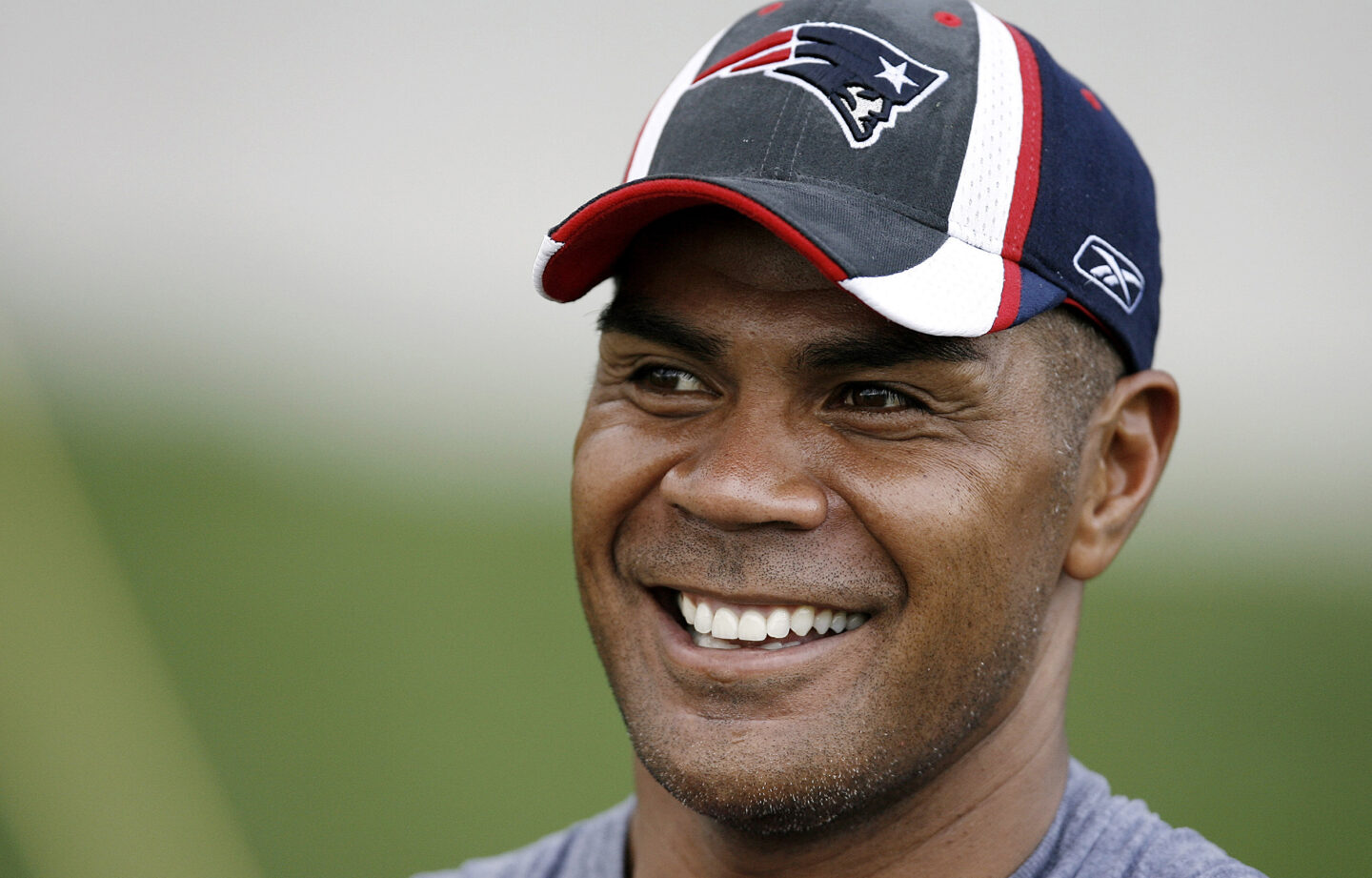Mourners gathered outside Junior Seau’s home in Oceanside on May 3, 2012. Sandy Huffaker/Getty Images
The phenomenal and tragic life of Junior Seau
Junior Seau, football great and favorite son of San Diego, grew up in a tough neighborhood of Oceanside. The great-grandson of a Samoan village chief, he became a multisport phenom at Oceanside High, an All-American linebacker at USC, and, drafted by his hometown Chargers, a sports legend in San Diego.
Spectacularly agile for his big size, Seau established himself as among the most formidable linebackers of his generation. He was also likable — gregarious with a big smile.
After 20 seasons in the NFL, he retired in 2009 to embark on his next chapter as a restaurant owner, philanthropist, and television personality. But his life took a troubling turn. He suffered wild mood swings and depression. He gambled compulsively and drank too much. In October 2010, Seau was arrested after his girlfriend told police he assaulted her during an argument. Hours later, he drove his SUV off a coastal bluff in Carlsbad, suffering minor injuries.

Winslow Townson/A.P.
Then, on the morning of May 2, 2012, Seau fatally shot himself through the heart. He was 43. He left no note, aside from some scribbled lyrics from “Who I Ain’t,” a country song about a man who regrets the person he has become. His brain was donated for study. The results confirmed what many suspected: Abnormalities consistent with chronic traumatic encephalopathy, a disease associated with repeated blows to the head.
During his NFL years, Seau was revered for his ability to play through pain and injury. In the ESPN documentary “Seau,” Taylor Twellman, a Major League Soccer player and friend of Seau’s, recalled telling the football star how he was experiencing lingering dizziness and headaches after a concussion. “And I’ll never forget this,” Twellman said. “He looked at me and he said, ‘Buddy, I’ve had a headache since I was 15.”
Seau was elected posthumously to the Pro Football Hall of Fame, cementing his status as one of the finest players to ever step onto the field. But his larger legacy is arguably the awareness that his tragic end brought to CTE at a time when the NFL was playing down links between football and the disease.
A year after Seau’s death, the NFL agreed to a $1 billion concussion settlement in a class action lawsuit that would provide compensation to former players affected by serious neurological and cognitive issues. So far, more than 1,000 awards have been doled out. Many more are yet to be addressed.
This article is from the California Sun, a newsletter that delivers must-read stories to your inbox each morning . Sign up here.
Get your daily dose of the Golden State.